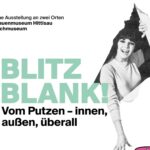Reihe INTERAKTIONEN; Institut für Zeitgeschichte (IfZ) der Univ. Wien (Web)
Zeit: Do., 18.01.2024, 11:30 Uhr
Ort: IfZ, Spitalg. 2-4/Hof 1, 1090 Wien
Mit der Ernennung des ehemaligen Texingtaler Bürgermeisters zum Innenminister im Dezember 2021 rückte eine Gedächtnisinstitution ins öffentliche Interesse, die bis dahin vorrangig einem Fachpublikum als Irritation im Feld zeithistorischer Ausstellungspraxis bekannt war: das 1998 im Geburtshaus errichtete „Dr.-Engelbert-Dollfuß-Museum“. Das im November 2023 präsentierte Konzept „Raum schaffen“ sieht eine grundlegende Abkehr vom Versuch vor, problematische Erinnerungszeichen mit Zusatztafeln oder kontextualisierenden Texten zu entschärfen. Stattdessen wird im Rahmen eines umgekehrten Museumskonzepts die bisherige Institution Schritt für Schritt in einem partizipativen Prozess aufgelöst. So wie beim Aufbau einer Ausstellung werden Objekte quellenkritisch befragt. Anstatt sie aus anderen Sammlungen zu entnehmen, werden sie in Archive, Museen oder Privatsammlungen überführt, wo sie in temporären Ausstellungen helfen, das Projekt bundesweit wirken zu lassen. Akteur:innen sind dabei lokale Bürger:innen, Schüler:innen, Wissenschafter:innen und Künstler:innen.
Remigio Gazzari arbeitet als Archivar im Bruno Kreisky- und Johanna Dohnal Archiv sowie als Kurator an Ausstellungs-, Forschungs- und Vermittlungsprojekten mit dem Schwerpunkt österreichische Zeitgeschichte und Erinnerungskultur.
Christian Rabl ist wissenschaftlicher Leiter des Zeithistorischen Zentrums Melk (Verein MERKwürdig), Mitarbeiter der Bundesanstalt Mauthausen (Koordination Melk Memorial) sowie Researcher im Forschungsprojekt „Die Porr AG und ihre Tochterunternehmen zur Zeit des NS“ am IfZ.
Johanna Zechner ist Historikerin und Kuratorin, gestaltet Ausstellungen und Vermittlungsprogramme zu Aspekten österreichischer Zeitgeschichte, Erinnerungskultur und Frauen- und Geschlechtergeschichte. Seit 2019 Leiterin der Oral History Sammlung „MenschenLeben“ an der Österreichischen Mediathek/Technisches Museum Wien.
Quelle: Newsletter des Instituts für Zeitgeschichte

 i.d.a. Dachverband deutschsprachiger Frauen/Lesbenarchive, -bibliotheken und -dokumentationsstellen
i.d.a. Dachverband deutschsprachiger Frauen/Lesbenarchive, -bibliotheken und -dokumentationsstellen  mdw – Univ. für Musik und darstellende Kunst Wien
mdw – Univ. für Musik und darstellende Kunst Wien  Frauenmuseum Hittisau
Frauenmuseum Hittisau  Vereinigung Bildender Künstler*innen Österreichs VBKÖ
Vereinigung Bildender Künstler*innen Österreichs VBKÖ  Forschungsplattform Gain – Gender: Ambivalent In_Visibilities der Univ. Wien
Forschungsplattform Gain – Gender: Ambivalent In_Visibilities der Univ. Wien  Sonderausstellung im Haus der Geschichte Niederösterreich
Sonderausstellung im Haus der Geschichte Niederösterreich  kärnten.museum und Haus der Geschichte Österreich
kärnten.museum und Haus der Geschichte Österreich  Graz Museum
Graz Museum  Wienbibliothek im Rathaus in Koop. mit dem Wien Museum: Ausstellung „Österreich, März 1933 bis Februar 1934. Die Zerstörung der Demokratie“
Wienbibliothek im Rathaus in Koop. mit dem Wien Museum: Ausstellung „Österreich, März 1933 bis Februar 1934. Die Zerstörung der Demokratie“